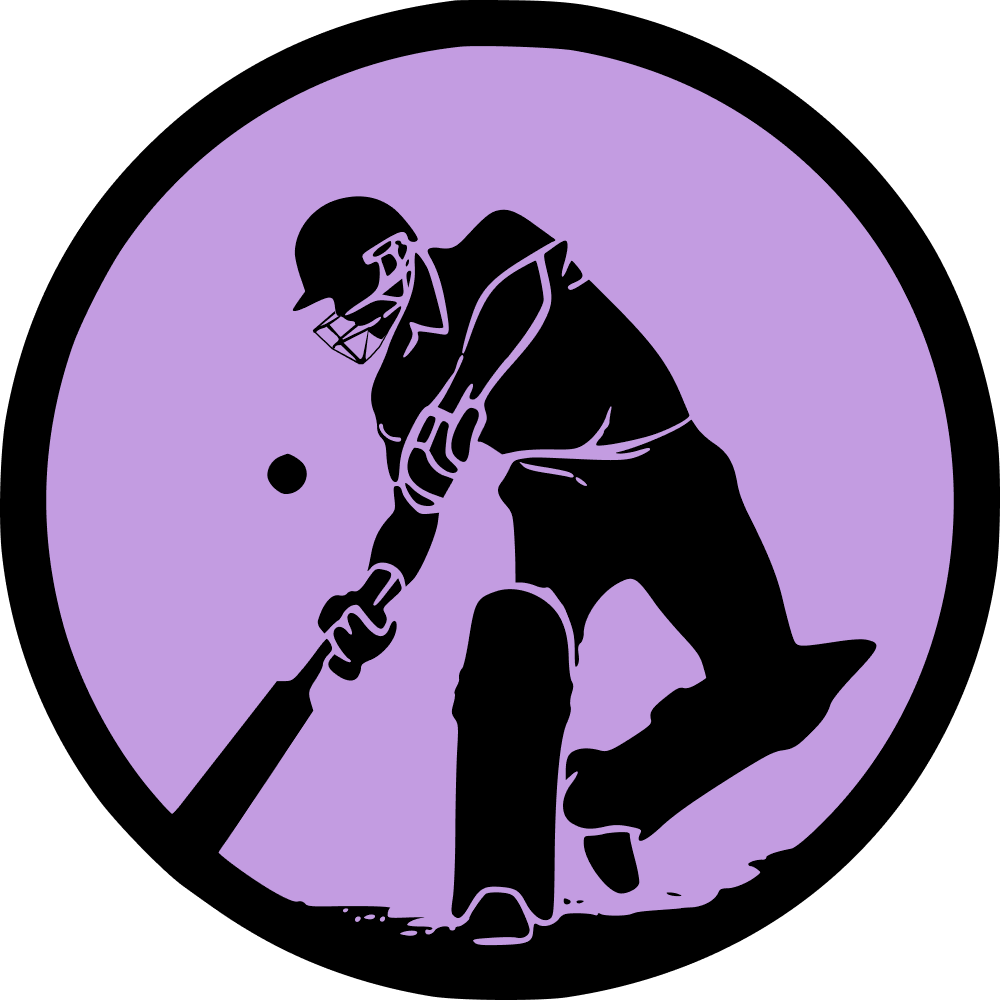When training to become a cricket player, whether you're an amateur or a professional, having the right cricket stumps for practice is essential.
Choosing the Right Cricket Stumps
Selecting the appropriate cricket stumps can be challenging, especially if you're new to the sport and unsure of what to look for. To assist you in setting up the perfect cricket equipment, Edwards Sports has created a practical guide on everything related to cricket stumps.
Understanding Cricket Stumps
Cricket stumps form a crucial part of the game, as they make up the wickets along with the bails. Positioned at the popping crease, the wickets consist of three stumps: the leg stump, centre stump, and off stump, topped by two smaller sticks called bails. The stumps play a vital role in determining whether a batsman or bowler scores a point. If the bails remain on the stumps, they are considered intact. However, if the ball dislodges the bails, the wicket is deemed broken. The term "stumped" also refers to a player being out, and "calling stumps" indicates the umpire ending the day's play. Additionally, stump cams are used in professional matches to provide unique TV angles, giving viewers an up-close view of the action.
Types of Cricket Stumps
Cricket stumps come in various types, generally distinguished by their material. Each type offers specific benefits and challenges for players, so exploring the options can help you find the best fit for your ground.
Wooden Cricket Stumps:
Often made from ash, wooden stumps are traditional and give the ground a classic feel. However, they are less durable than other materials and can warp over time. High-quality ash and varnishing can extend their lifespan, but they may struggle against repeated hits from fast-moving cricket balls.
Metal Cricket Stumps:
Unlike wooden stumps, metal stumps are usually freestanding and do not need to be hammered into the ground, making them ideal for home practice. They are incredibly durable and can be stored outside without much damage. However, some metal stumps are designed as a single unit with attached bails, limiting the ability to play a complete game.

Plastic Cricket Stumps:
Durable and affordable, plastic stumps are a good option for practice, especially for those on a budget. Like metal stumps, they are often a single unit, which can make it challenging to play full games.
LED Stumps:
A modern variation, LED stumps light up, making them ideal for low-visibility conditions. They help the bowler see the wicket through the batsman's legs during poor weather.
Specifications of Cricket Stumps
Height:
According to the official laws, cricket stumps should be 28 inches (71.1 cm) above the pitch surface. The bails must fit without altering their shape and project no more than 0.5 inches (1.27 cm) above the stumps. Precision is critical in cricket, and these measurements must be exact.
Distance Between Stumps:
Stumps are placed close together to form the wicket, allowing the bails to sit comfortably on top. Official regulations state that each set of wickets must be 9 inches (22.86 cm) wide, with bails measuring 4.31 inches (10.95 cm) in length. The stumps need to be spaced just under this width to support the bails correctly.

Installing Cricket Stumps
Traditional wooden stumps are held in the ground with a tapered spike end. A cricket stump gauge is used to make holes in the ground, into which the stumps are placed. A mallet or cricket bat is then used to push the stumps into the ground so they stand independently. Once the stumps are secure, the bails can be added to complete the wicket.
Historical and Modern Evolution of Cricket Stumps
Initially, cricket only used two stumps until the three-stump setup was introduced in 1775. Modern advancements include stumps with sponsor logos, stump cams for action replays, and LED stumps, which debuted at the ICC World Twenty20 in 2014 and are now standard in limited-overs matches and day/night Tests.
Official Rules for Cricket Stumps
According to the laws set by Lord's, cricket wickets must adhere to specific rules:
- Each pitch has two sets of parallel wickets.
- Wickets must be 9 inches (22.86 cm) wide.
- Stumps must be 28 inches (71.1 cm) high, with bails projecting no more than 0.5 inches (1.27 cm) above them.

Importance of Cricket Stumps
Cricket stumps are integral to the game's equipment. In addition to stumps, essential items include cricket netting, pitch accessories, and practice tools like indoor nets or cricket cages. Players also need bats, protective gear, appropriate shoes, and a supply of cricket balls for practice and matches.
In cricket, stumps and bails form the wicket at the end of the pitch. The bowler aims to hit the stumps, and if successful, the batsman is dismissed, a method known as stumping. The construction of cricket stumps involves three vertical stands supporting two bails, with the entire wicket made of wooden stumps and bails. Each stump is 28 inches high, with a diameter of 1.5 to 1.38 inches, and has a U-shaped groove at the top to support the bails.
Off Stump: Located on the offside, where the batsman places their bat.
Middle Stump: Positioned between the off stump and leg stump.
Leg Stump: Located on the on-side, near the batsman's legs.
For anyone serious about improving their cricket skills, understanding the types and proper setup of cricket stumps is essential. This guide should provide a comprehensive overview to help you make informed choices for your cricket training and equipment.

